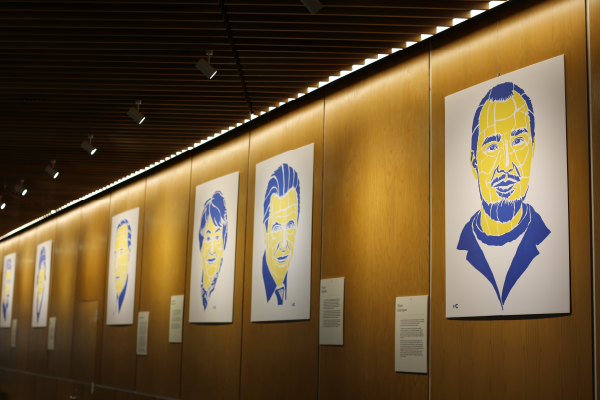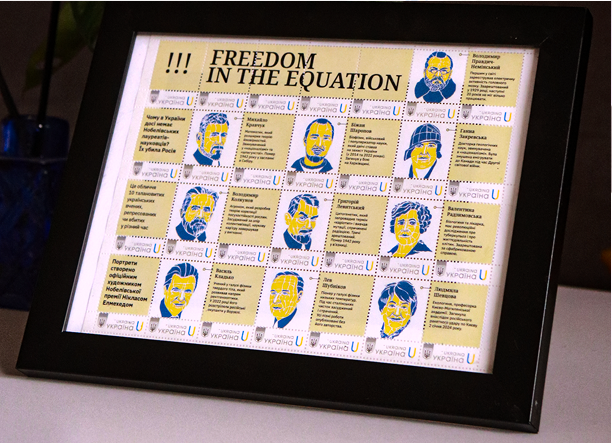

Frontline Applied Physics
02.05.24
Sumy is located about 50 kilometers from the border with Russia, and therefore, during the full-scale invasion, it was under attack. Russian troops did not manage to fully occupy the city, but they did enter it with columns, blockading and shelling. After the region was liberated on April 4, 2022, the threat still looms from the nearby border. During air attacks, it often happens that the strike occurs first, and then the air raid siren sounds. It is under these conditions that the local Institute of Applied Physics of the National Academy of Sciences of Ukraine operates.
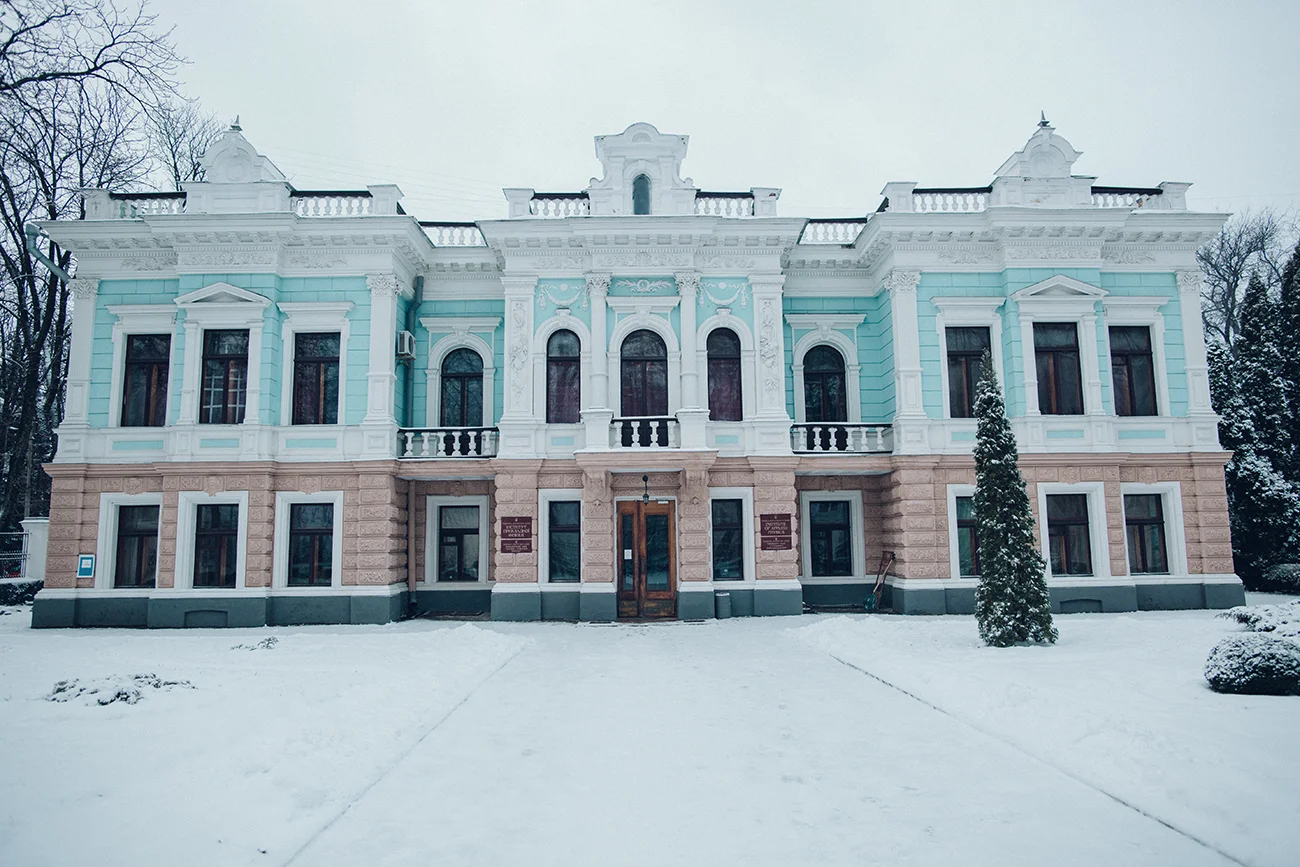
Its history is also connected with wars. Applied physics in Soviet times was closely intertwined with the defense industry: fundamental research was of interest to the party leadership primarily for the development of the latest military technologies. In the second half of the 1980s, Sumy was a powerful center of mechanical engineering and chemical industry, but without a significant research component. Thus, the decision was made to establish a large-scale Institute of Applied Physics here.
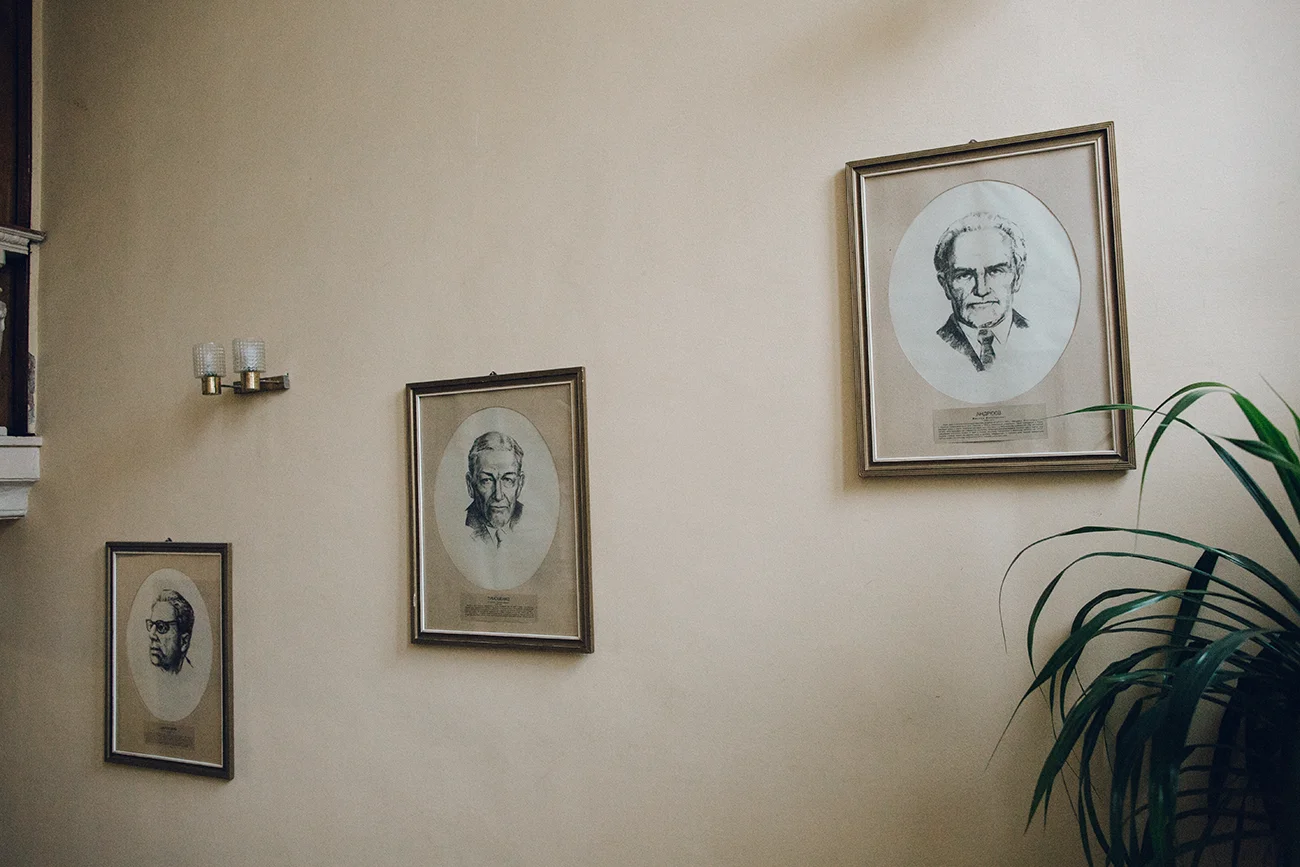
However, the Soviet Union eventually collapsed, and an independent Ukraine established a separate institute with a peaceful focus in December 1991. Its first director was Volodymyr Storizhko, who brought with him a team from Kharkiv and an electrostatic accelerator he had developed. He also managed to attract physicists of Ukrainian origin from Novosibirsk and Sukhumi. Now, academician Storizhko is the honorary director of this institute.
The history of the Sukhumi physicists is connected with two wars at once: first, the center there was founded by German physicist and developer of the Third Reich's nuclear program, Manfred von Ardenne, whose laboratory was moved to Sukhumi by the USSR after World War II; second, in the 1990s, Sukhumi physicists fled from a new war that broke out in Georgia.

Nevertheless, the team in Sumy worked well together, grew with local personnel, and began to explore various aspects of the interaction of elementary particles both theoretically and with their own constantly improved equipment.
In the mid-2000s, the National Academy of Sciences had relatively good funding, and the institute received another accelerator. Wide international cooperation was also established, which continues to this day, including with the European Organization for Nuclear Research (CERN), German, French, Polish, and Chinese scientists.

According to the scientific secretary Oleksiy Voroshyla, the institute was established at the very end of the Soviet era, so there was no time to build huge facilities like in other similar institutions, and therefore, it was easier to maintain them in new realities.
Today, the institute has about one and a half hundred employees. With the start of the full-scale invasion, many scientists left, but after the liberation of Sumy region, most returned. Only a few people are currently abroad, and the institution continues to function almost fully.
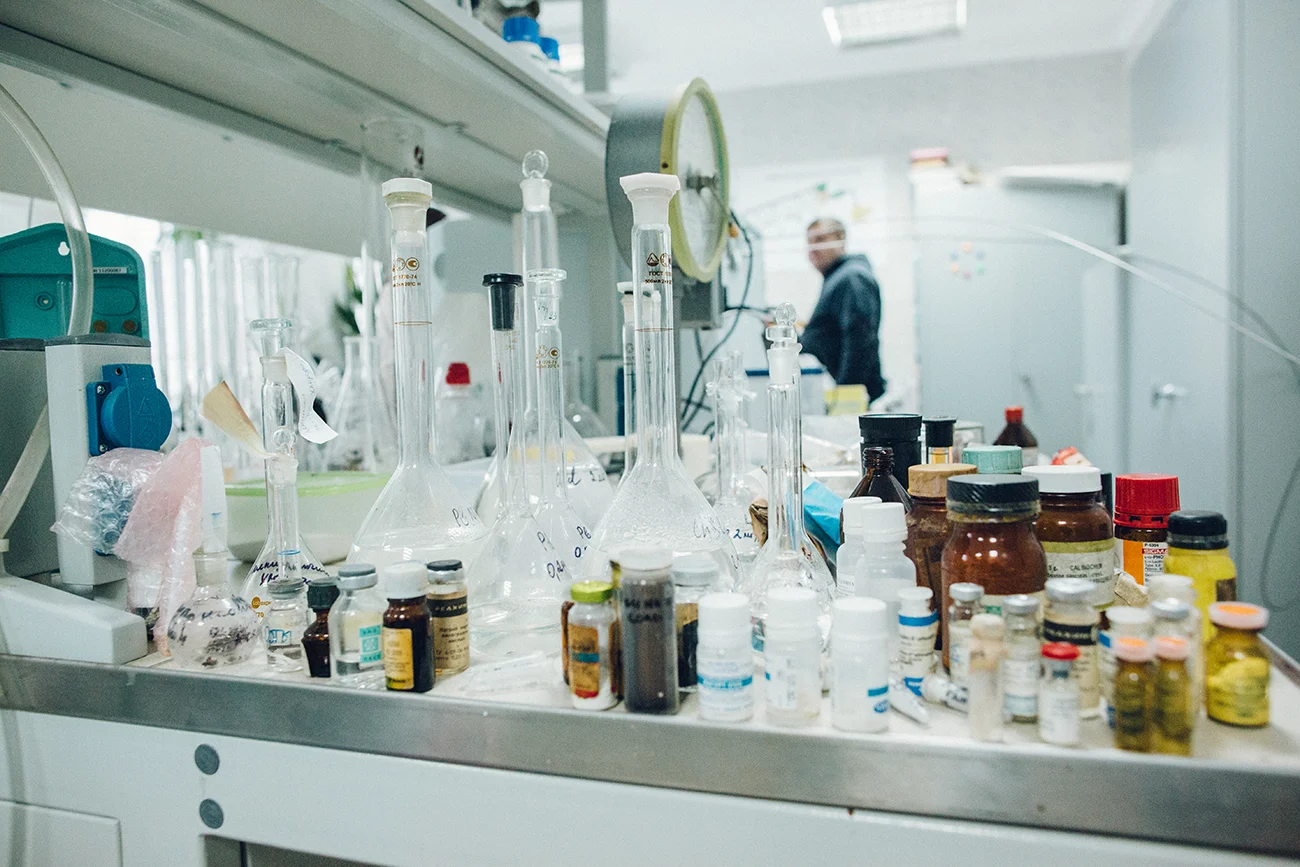
The institute studies the processes of interaction of ions, electrons, and photons with matter, develops nuclear-physical methods for studying the structure and composition of materials and electrostatic accelerators.
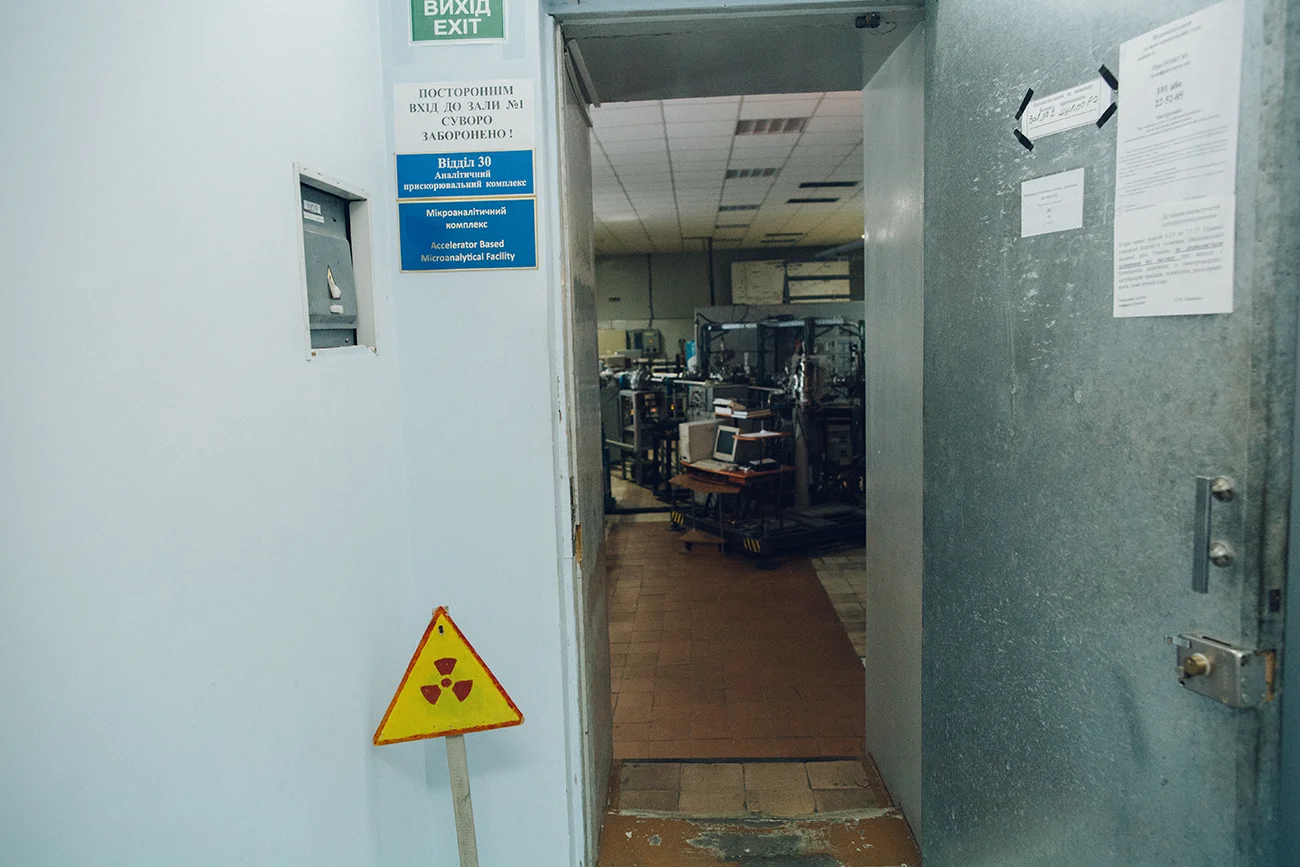
We talked with the head of the department, Oleksandr Bugay, about one of the directions of applied research, namely radiocarbon dating. Radiocarbon dating is a method for determining the age of artifacts based on the measurement of the relative content of carbon-14 isotope in natural objects. The Sumy institute has the only accelerator mass spectrometer in Ukraine that allows for the application of this method. It is extremely useful in archaeology when it is necessary to determine the age of wooden artifacts, bones, as well as ceramics (given the presence of organic impurities).
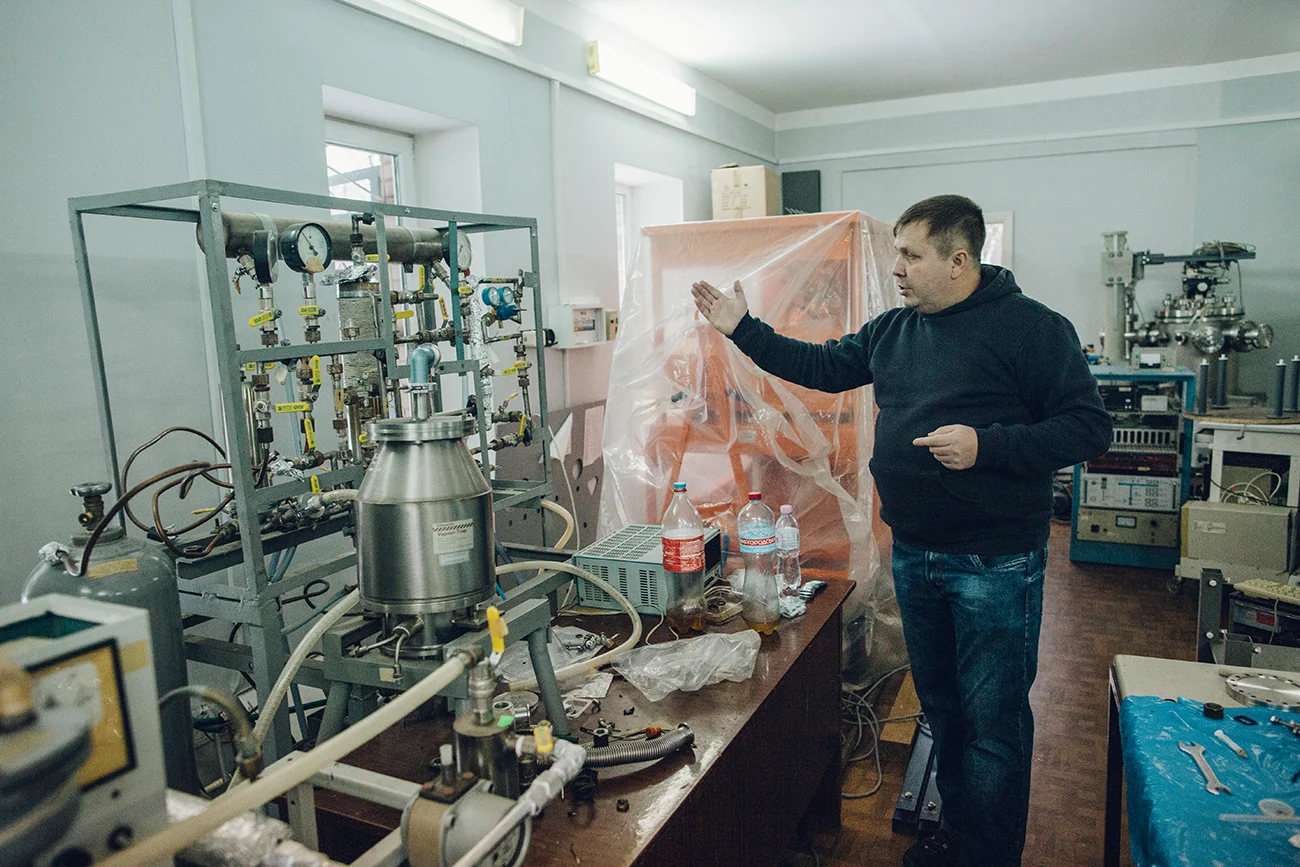
According to Mr. Oleksandr, it is quite a complex method. The first challenge is the purity of the sample for analysis. Artifacts often remain in the soil or water for a long time, which affects the ratio of carbon isotopes. There are also contaminations related to human factors, such as when samples are handled with bare hands without gloves or smoked near them, leading to contamination with "young carbon." The process of sample preparation is often more complex than the analysis itself and can take several weeks.

The second challenge is converting the isotopic age to the calendar age. The reason is that the calibration curves used for this are not smooth. This is due to the fact that the amount of carbon-14 in nature varies for different eras and geographical regions. This was influenced by solar activity, changes in the Earth's magnetic field, the use of coal as an energy resource, nuclear weapons tests, and more. All of this significantly affects the accuracy of dating.
The third challenge is interpreting the results. For example, dating a wooden icon can determine the age of the wood, but the icon itself may have been painted on the material much later.
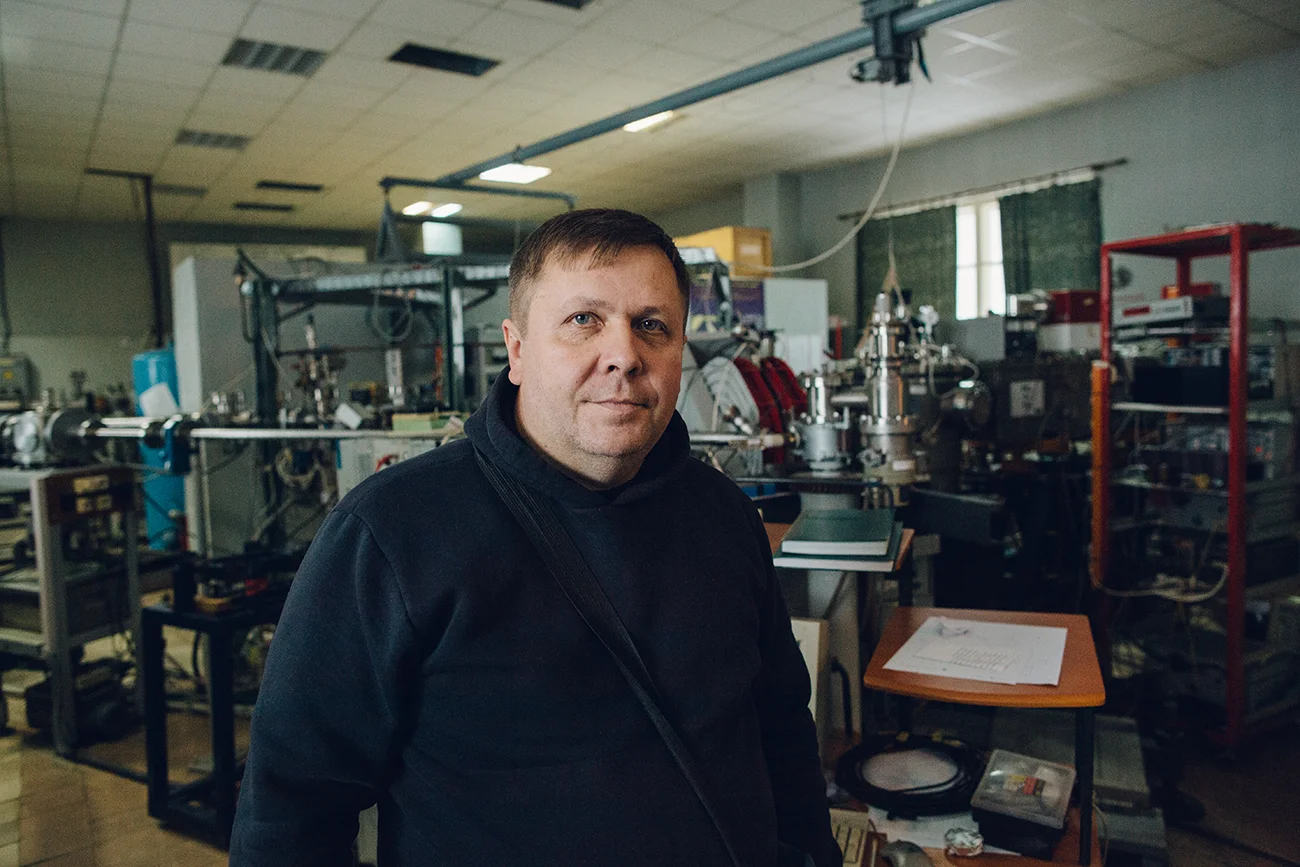
"We can't afford the usual scientific chauvinism," jokes Mr. Oleksandr, hinting at the condescending attitude toward humanitarians, "so we always check our results with the opinions of archaeologists and art historians and reach a common conclusion."
Scientists have conducted blind experiments with artifacts, analyzing samples without knowing the results of dating by archaeological methods, and achieved good results. But there were also amusing cases.
For example, once scientists studied wood from a dugout boat found in Sumy. The analysis showed the 13th century.
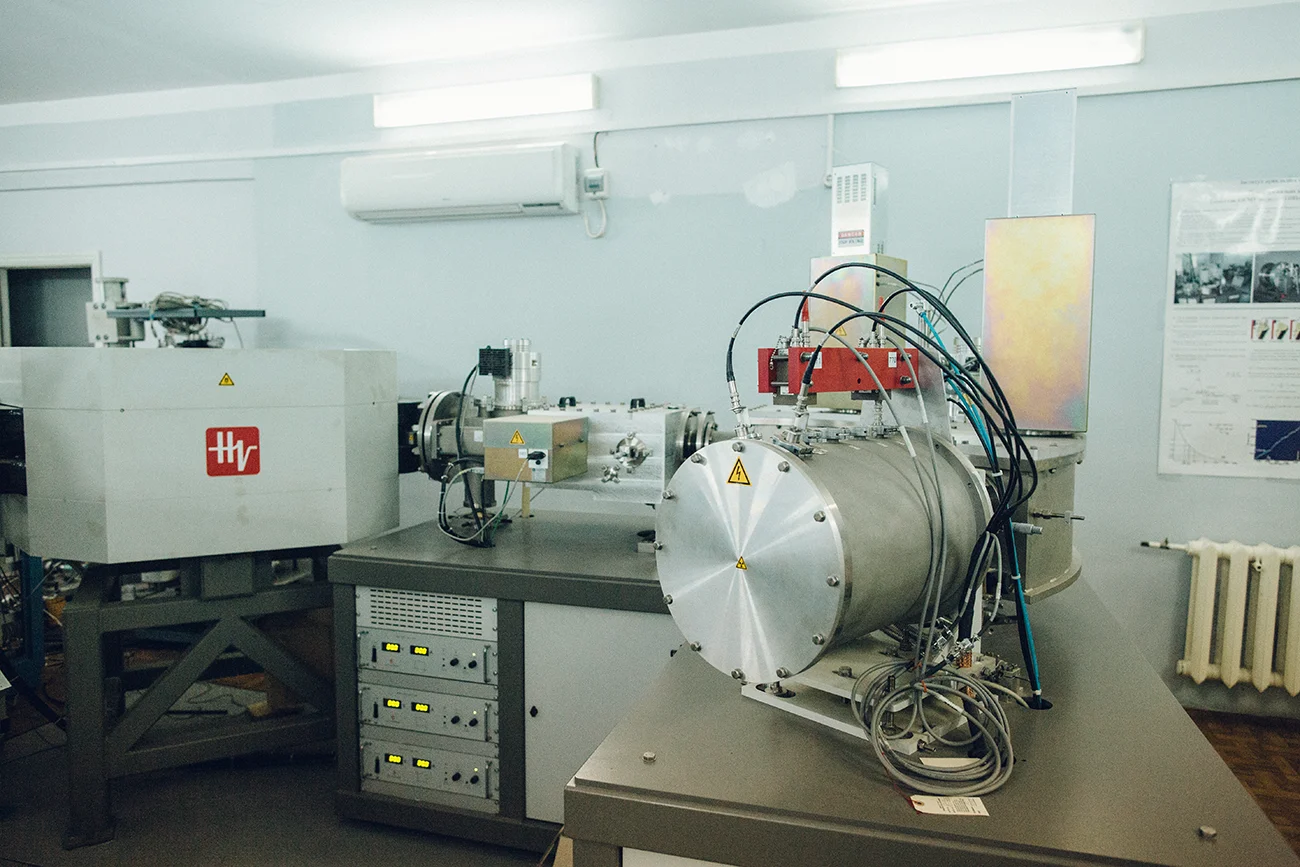
"It smelled like a sensation," Mr. Oleksandr recalls, "because Sumy was founded much later. But then we realized that the boat was lifted from the Psel, took into account the environmental impact, and new calculations gave the 17th-18th century with an 80% probability."
Work with samples on the mass spectrometer can take several hours, but preparing (accelerating) the accelerator takes about a month:
"First, you need to pump the air out of the vacuum system, and then begins the so-called training of the accelerator: we gradually raise and lower the accelerating voltage, which needs to be brought to a million volts. This takes 4-5 weeks, and then begins beam formation and obtaining the necessary modes. The device is tested on "empty" samples, and only then are materials taken for analysis."
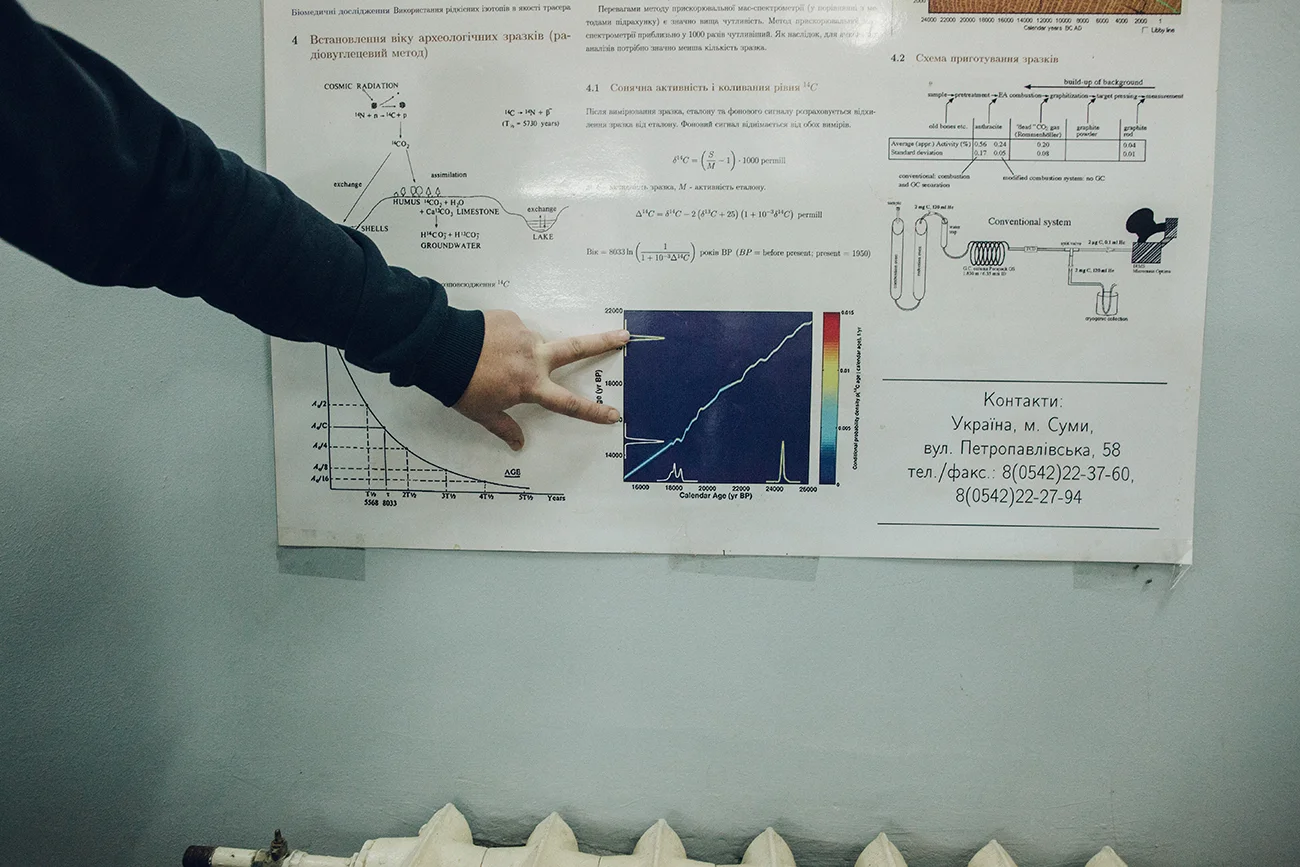
Before the full-scale invasion, the mass spectrometer was accelerated and ready for the analysis of bone materials from Poltava archaeologists, but the work had to be stopped and the equipment preserved.
In the conditions of strikes and unstable power supply, expensive equipment is at serious risk. The laboratory building of the Institute was partially damaged as a result of an air strike on the night of March 12, 2022. Scientists are now cautiously trying to resume research. One of their projects is a joint effort with the University of Warsaw: characterizing barbarian imitations of late Roman period coins found in Ukraine.
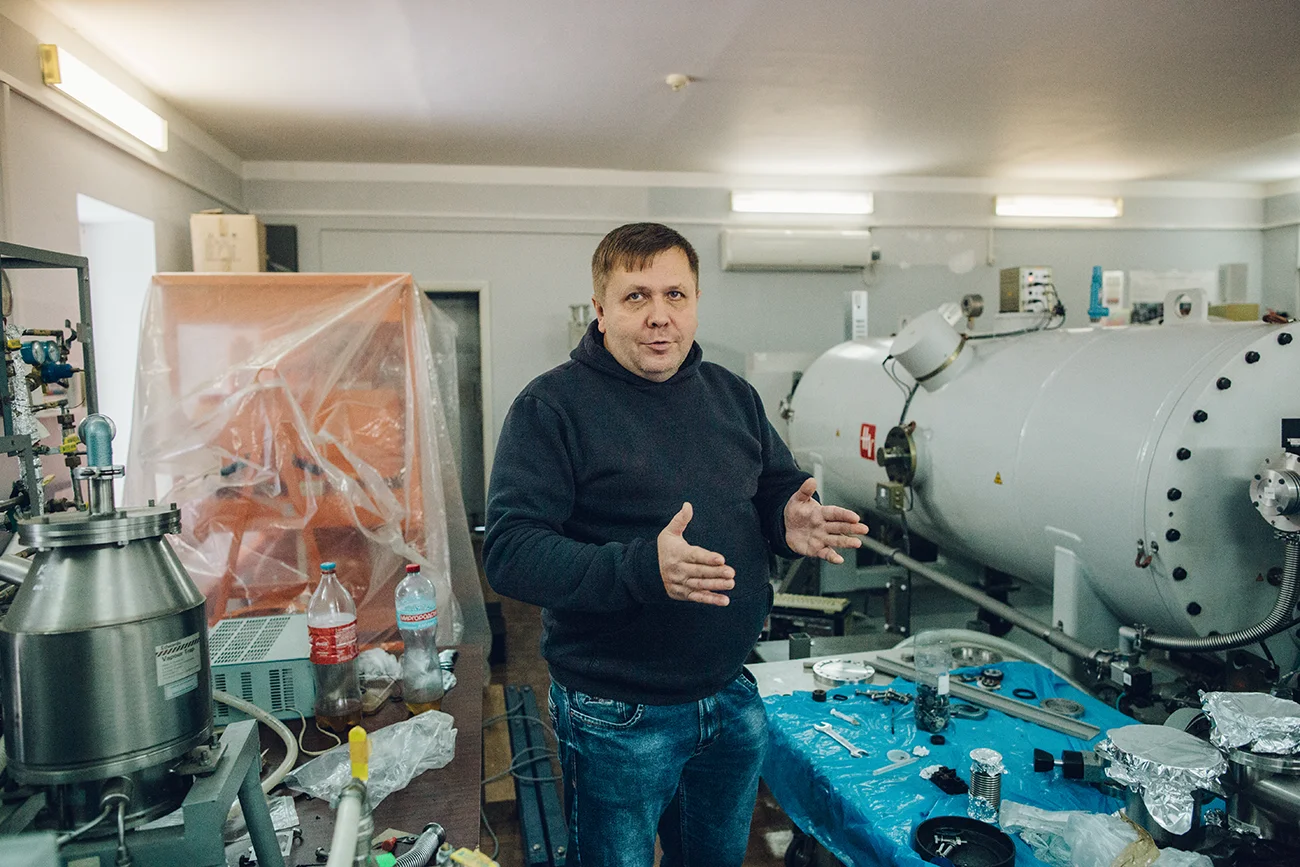
Oleksandr Bugay dreams of purchasing equipment that will allow for more optimal dating of ceramics and expanding the circle of clients, as there is a queue worldwide for dating discoveries.
Work with archaeological samples is currently the main area of activity in the institute's laboratory, but scientists also work with ecologists, nuclear energy specialists, and forensic experts. A joint project was implemented with Americans on so-called nuclear forensics: taking "fingerprints" of different materials (isotopic, chemical, and physical properties) to identify their origin. This allows for the blocking of their illegal distribution channels.
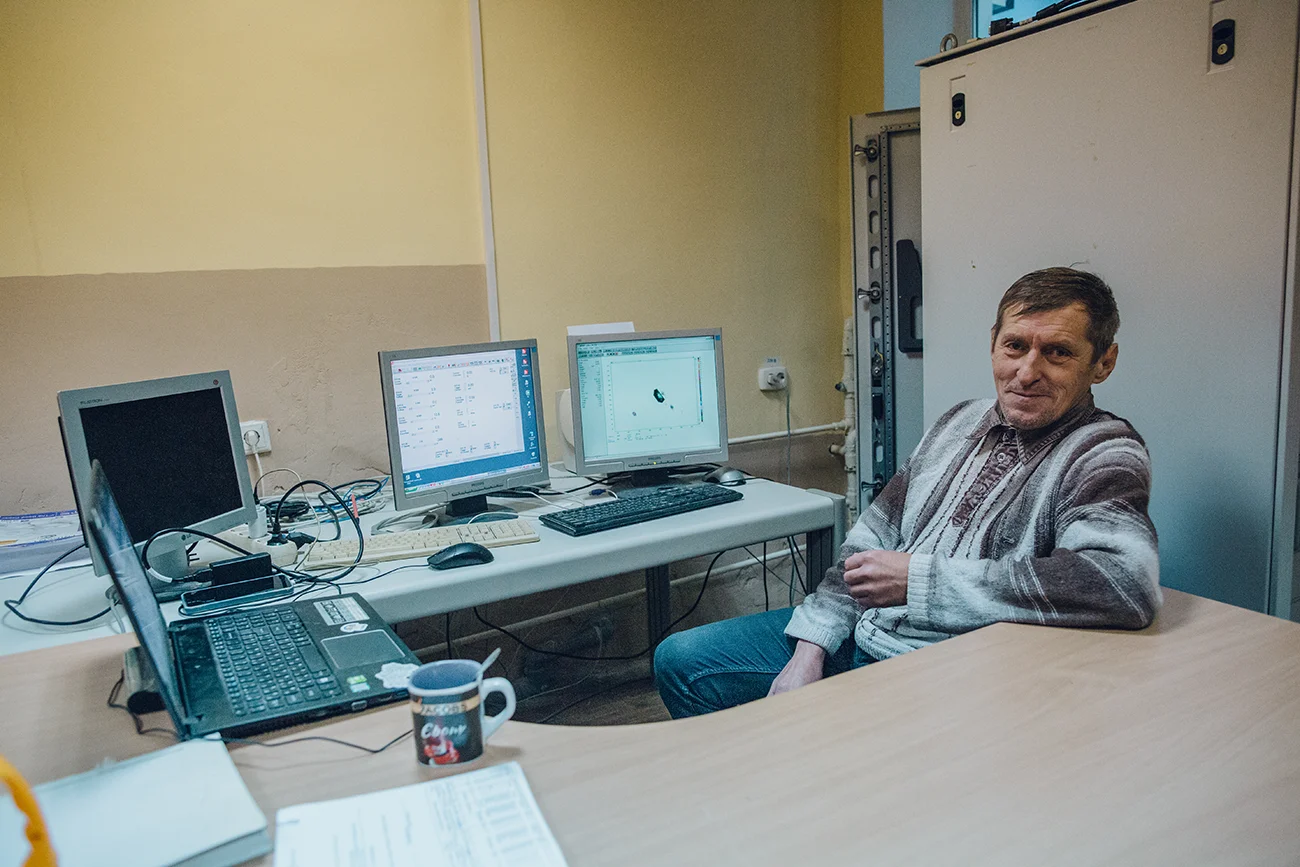
I asked the scientific secretary about the problems the institute is currently facing. Apart from the war, Mr. Oleksiy mentioned the difficulties of attracting young personnel: "Salaries are already meager, and due to funding cuts, they have been reduced further. A young beginner in an IT company earns more than our professor."

However, despite everything, the institute has young scientists. Yuliya Lebedynska is currently in her second year of doctoral studies, but she is already involved in a project related to CERN and is working on preventing breakdowns in accelerators.
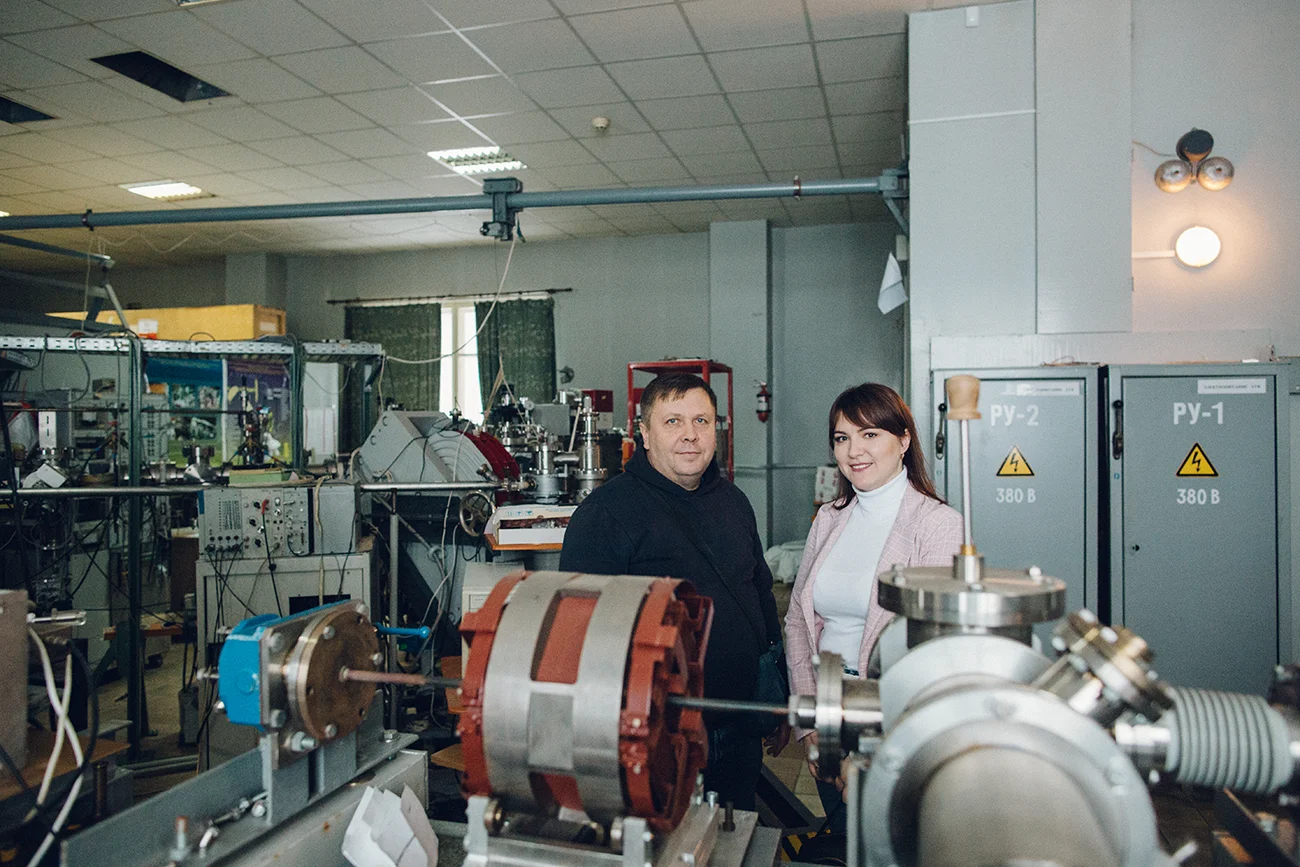
In general, accelerators accelerate and collide particles so that they break down into elements, which are then analyzed. During this process, something similar to a lightning strike can occur, capable of damaging equipment. This is the problem the young scientist is working on.

When I asked Yuliya what problems she sees in the institute's activities, apart from the proximity of the enemy, the doctoral student complained that it is currently problematic for the male part of the team to travel abroad, making it difficult to maintain full international contacts and establish cooperation.
Despite the proximity to the aggressor's border, optimistic moods prevail in the Sumy Institute of Applied Physics, even though "dear neighbors" are now mostly interested in applied ballistics across the wide field of physics.
With the support of the Alfred P. Sloan Foundation and the assistance of IIE.

